Photo Gallery
Photos by Brian Finch
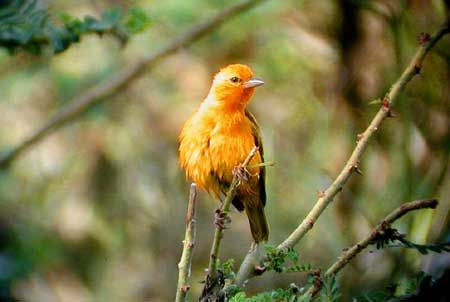
Our first birding excursion will be to the Entebbe Botanical Gardens, where our target will be the Orange Weaver, a species we are unlikely to encounter elsewhere. This flame-throated delight lives alongside four other yellow weaver species, all of them nesting in the same bushes!
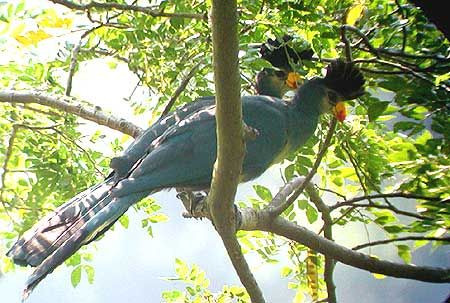
In the west of the continent, the Great Blue Turaco is scarce and shy, but in Uganda it is a common bird of the Kampala suburbs, readily seen in Entebbe Botanical Gardens.
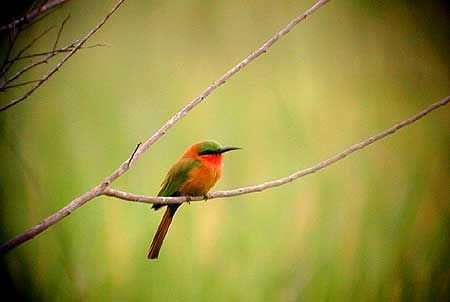
Uganda has many species of bee-eater, all of them very attractive, but perhaps the most beautiful is the Red-throated Bee-eater, a common species in Murchison Falls National Park, where it nests in sandy cliffs along the Nile.
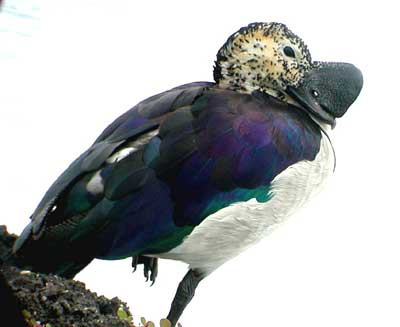
Waterbirds nesting along the wet margins of the Nile include Knob-billed Duck.
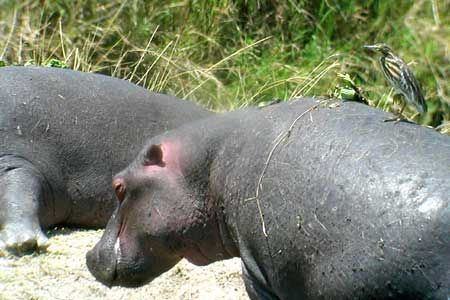
Hippopotamus make wonderful resting platforms, and are used by a number of species. One hippo here is providing a roost for an uncommon visitor, a Madagascar Squacco Heron recently arrived from the distant Red Isle.
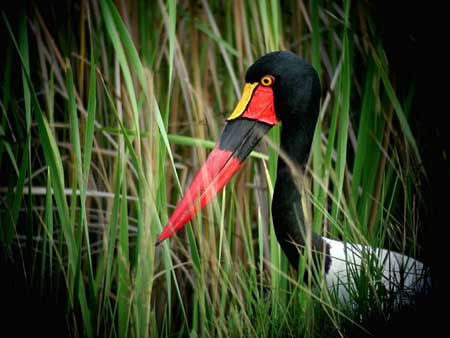
Standing some five feet tall, the stately Saddle-billed Stork probes the marsh vegetation for frogs. This golden-eyed bird is a female; males have black eyes.

The Shoebill is on most birders’ must-see list. A denizen of extensive swampland, it’s more numerous than was once thought, but it is difficult to access its habitat. Once found, the species can be quite confiding, and we hope to see one or more along the Nile River.
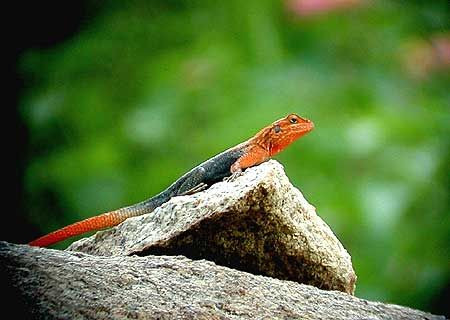
Scuttling over the walls of lodges and around the rocky areas of Murchison Falls National Park is the striking Finch’s Agama. This recently described species (named for its discoverer, our leader, Brian Finch!) is both arresting and rather common.
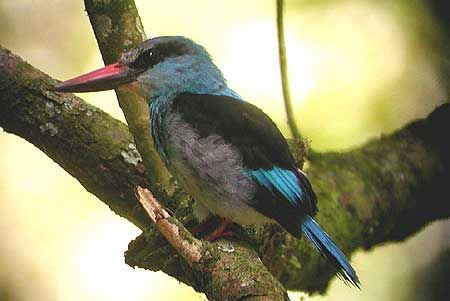
Not all kingfishers are associated with water. The noisy Blue-breasted Kingfisher is a true forest inhabitant, preferring to remain hidden in the canopy. Sometimes in the morning at Budongo a bird will be found sitting out in the open.
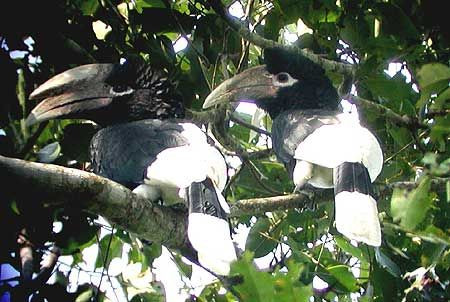
White-thighed Hornbill is at the eastern edge of its range at Budongo Forest, where it is a common and very noisy species. Like all other true hornbills, the males wall the female into the nest hole and feed her through a small opening while she continues to incubate.
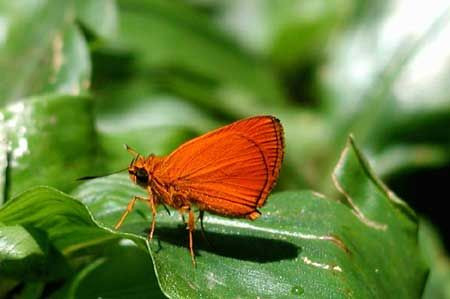
Ugandan forests are very rich in butterflies, many of them extremely attractive. In the shaded parts of Budongo Forest lives the Fiery Skipper.
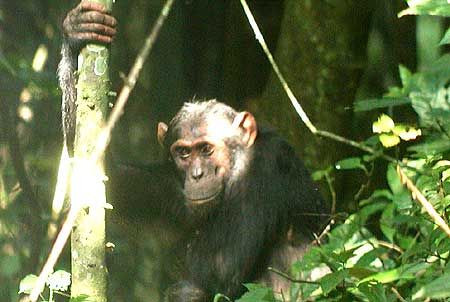
A number of Ugandan forests still have Chimpanzees, but apart from habituated groups they can be hard to see. Spending most of their time in the canopy searching for fruiting trees, they are not often seen on the ground, unlike this one in Budongo Forest.
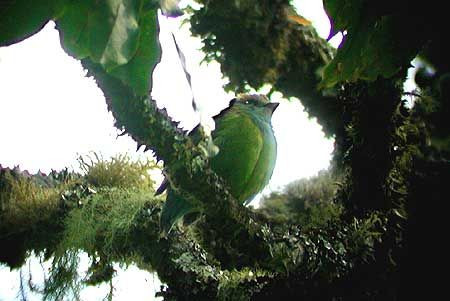
The Albertine Rift forests have a unique avifauna with a very high rate of endemism. One of the almost mythical birds here is the African Green Broadbill, which lives quietly (very unusual for a broadbill) on the slopes of Bwindi-Impenetrable National Park.
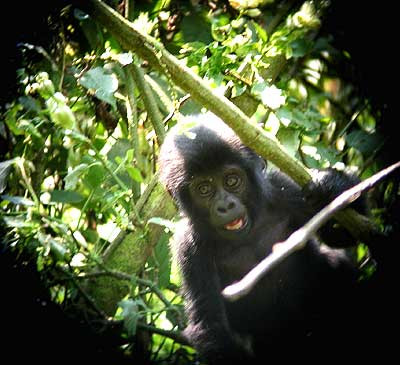
While in Bwindi-Impenetrable National Park we’ll have the opportunity to take a Gorilla Trek. Time spent with these docile animals will never be forgotten, especially if there are some very young gorillas in the group, as they never keep still for a moment and are full of curiosity.
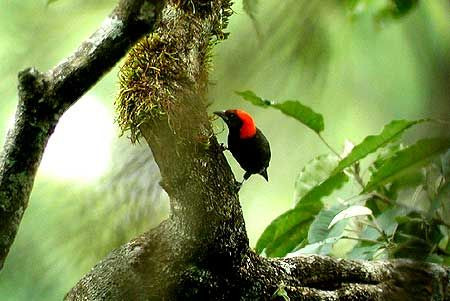
The weavers have radiated widely in Africa. A very few, including this Red-headed Malimbe, are bark specialists and creep around trees much like a nuthatch.
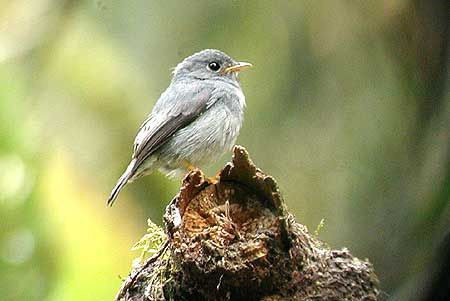
Nearly every tour will have something out of the ordinary. On our latest trip to Uganda we were rewarded with Yellow-footed Flycatcher, a West African forest species hitherto known in Uganda only from a small population in the Budongo Forest.
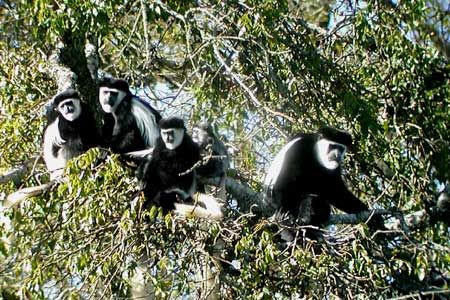
Primates are well represented in Uganda, and one of the most attractive is the widespread and common Black-and-White Colobus. They like to bask in the early morning sun before the day gets too hot and the group commences foraging for leaves.
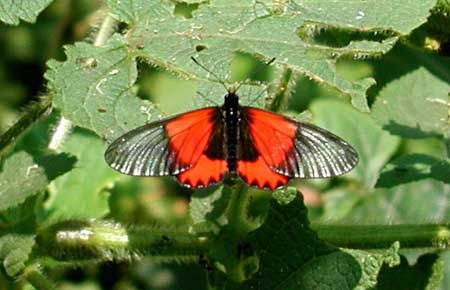
The Albertine Rift boasts a large number of endemics in many branches of the animal kingdom. A very striking butterfly found only in this habitat and seen fairly readily at Bwindi is Acraea eltringhami, shown here perched on a giant nettle.

The rich butterfly fauna of Uganda becomes obvious when large groups of multiple species push and shove each other for the rich minerals offered by fresh carnivore dung.
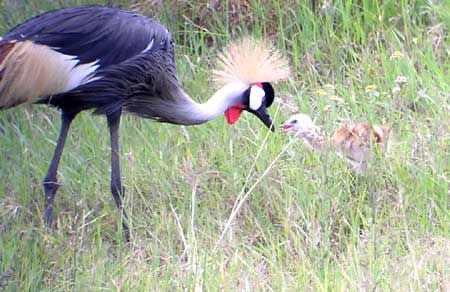
Leaving the forested areas for more open country, we’ll find Uganda’s National Bird, the Crowned Crane…
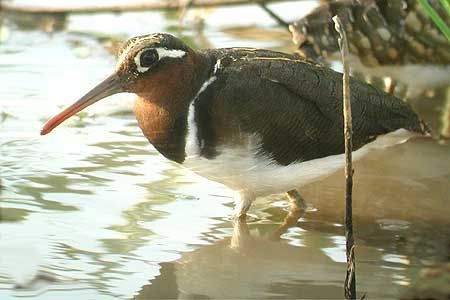
…while Greater Painted-Snipe favor small temporary pools. Apart from being very ornate for a shorebird, painted-snipe exhibit the same “reversed” sexual roles as phalaropes and Eurasian Dotterel: the brighter females leave the males to incubate the eggs and look after the young.
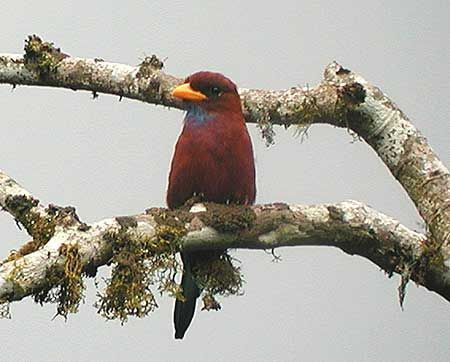
The last stop on our tour is Mabira Forest, not far from the border with Kenya. In spite of its close proximity, Mabira has forty resident species that have never been recorded in Kenya, including Blue-throated Roller, which feeds on the wing at dawn and dusk, catching insects over the forest.
